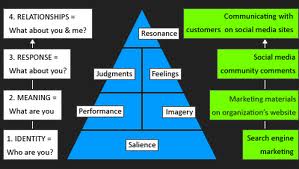
All of our content is based on objective analysis, and the opinions are our own. It helps analysts and research houses analyze, forecast, and perform corporate valuation in order to create future economic decisions in the company. Income statements is depreciation a liability why or why not are generally used to serve as a reporting metric for various stakeholders.
- EBT, also referred to as pre-tax income, measures a company’s profitability before income taxes are accounted for.
- Even private businesses provide them for the sake of their stockholders, creditors, and other interested parties.
- It segregates total revenue and expenses into operating and non-operating heads.
- While not present in all income statements, EBITDA stands for Earnings before Interest, Tax, Depreciation, and Amortization.
- A financial professional will offer guidance based on the information provided and offer a no-obligation call to better understand your situation.
A Critical Skill for Business Leaders
Many small businesses need financial statements to apply for credit or to provide financial information to a potential lender. Using an income statement to demonstrate a consistent history how do you calculate portfolio beta of income and profitability can make this process easier. By generating income statements and other financial reports on a regular basis, you can analyze the statements over time to see whether your business is turning a profit.
Why You Can Trust Finance Strategists

For instance, financial statements for the month of January 2020 would consist of a balance sheet as of January 31, 2020, and a monthly Income Statement for the entire month of January 2020. Operating income is the amount of profit that your business generates from its normal business operations. This income is calculated after deducting all the operating expenses from the gross profit.
See profit at a glance
The fundamental approach used in the pronouncements sees all gains and losses appear on the income statement. Because of this, horizontal analysis is important to investors and analysts. By conducting a horizontal analysis, you can tell what’s been driving an organization’s financial performance over the years and spot trends and growth patterns, line item by line item. Ultimately, horizontal analysis is used to identify trends over time—comparisons from Q1 to Q2, for example—instead of revealing how individual line items relate to others. This type of analysis makes it simple to compare financial statements across periods and industries, and between companies, because you can see relative proportions.
Create a Free Account and Ask Any Financial Question
Net income—or loss—is what is left over after all revenues and expenses have been accounted for. If there is a positive sum (revenue was greater than expenses), it’s referred to as net income. If there’s a negative sum (expenses were greater than revenue during that period), then it’s referred to as net loss. These are all expenses linked to noncore business activities, like interest paid on loan money. Similarly, for a company (or its franchisees) in the business of offering services, revenue from primary activities refers to the revenue or fees earned in exchange for offering those services.
Understanding income statements is vital because they depict a company’s financial performance over a reporting period. That is, it calculates what your company owns and the amount it owes together with the amount that is invested by the shareholders of the company. Income statements record revenues, gains, expenses, and losses in order to determine the net profit earned or net loss incurred by your business. It provides a summary of revenues, costs, and expenses incurred by your business during a specific accounting period. The next section is the operating income, which is calculated by subtracting the operating expenses from the gross profit. This helps the users of the financial statements understand the capability of the company to generate profits before taking into account the impact of the financing activities.
Download our free course flowchart to determine which best aligns with your goals. Income statements are important because they show the overall profitability of a company and help investors evaluate a company’s financial performance. Income statements can also be used to make decisions about inorganic or organic growth, company strategies, and analyst consensus. An income statement is one of the most important financial statements for a company. Typically, investors prefer looking at a company’s operating profit figure rather than a company’s bottom line as it gives them a better idea of how much money the company is making from its core operations. It is also practical to use this format when you do not need to separate operating expenses from the cost of sales.
Similarly, a manufacturer could record revenue as soon as materials and a workforce are available. The extreme uncertainty of this approach has made it unacceptable for practice. Using this approach, a building owner could record rental revenue upon completion of construction, the purpose of depreciation irrespective of occupancy. Under this approach, for example, a manufacturer would record revenue upon the completion of each product, despite no buyers offering to acquire it.
